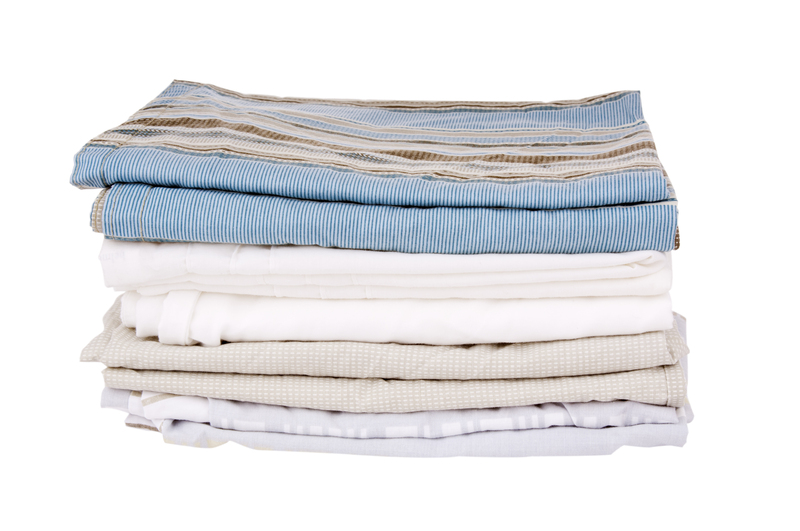Can We Halt the Spread of Microplastic Pollution?
Microplastic pollution has emerged as one of the most critical environmental challenges of our era. These tiny particles -- often less than 5mm in size -- have pervaded oceans, freshwater systems, soils, and even the air we breathe. As evidence of their widespread impact continues to mount, a pressing question arises: Can we halt the spread of microplastic pollution? In this article, we delve into the origins, dangers, and proposed solutions surrounding microplastic contamination, providing a comprehensive and informative guide for concerned readers, policymakers, and eco-conscious individuals.
Understanding Microplastics: What Are They?
To address the microplastic problem, we must first understand what microplastics are. Microplastics are tiny plastic fragments, fibers, or beads, typically resulting from the breakdown of larger plastic debris or manufactured intentionally for specific uses (such as exfoliating beads in personal care products).
Types of Microplastics
- Primary Microplastics: Manufactured small for industrial or cosmetic use (e.g., microbeads in toothpaste).
- Secondary Microplastics: Result from the degradation of larger plastics by UV rays, mechanical action, or weathering.
Microplastics have been found in remote mountain ranges, deep ocean trenches, and Arctic ice, showing their pervasiveness across the globe.

The Sources of Microplastic Pollution
Stopping microplastic contamination requires an understanding of its main sources. These include:
- Textile fibers released during washing of synthetic clothing.
- Tire abrasion that sheds tiny plastic particles onto roads, later washed into water bodies.
- Personal care products containing microbeads.
- Degraded plastic waste from packaging, bottles, or litter.
- Industrial abrasives used in sandblasting or cleaning operations.
Understanding the origin of microplastic waste empowers communities and governments to implement targeted strategies for plastic pollution control.
The Global Spread of Microplastic Pollution
Microplastics are not confined to the regions where plastics are used or discarded. They are transported over long distances by wind, rivers, and ocean currents. Research has confirmed their presence in the world's most pristine areas, from the Arctic to the high Himalayas.
Impacts on Marine Life and Human Health
- Marine creatures mistake microplastics for food, leading to malnutrition and toxicity.
- Microplastics can enter the human body through seafood, drinking water, and even air.
- A growing body of research links microplastic ingestion to potential health risks, such as inflammation and hormonal disruption.
Halting plastic pollution is crucial for safeguarding not only wildlife but also human health.
Why Is It So Hard to Halt Microplastic Contamination?
Even with awareness on the rise, stopping microplastic spread presents significant hurdles:
- Micro size: Their minuscule structure makes them difficult to capture through conventional water or air filtration systems.
- Sheer volume: Millions of tons of plastic are produced and disposed of annually, generating endless microplastic sources.
- Pervasive use: Plastics are found in everything from packaging to electronics, textiles, and vehicles, making control challenging.
- Lack of regulation: Many countries have insufficient policies prohibiting or restricting microplastics in products or emissions.
Despite these complications, solutions to microplastic pollution are possible through collective global effort.
Innovative Technologies to Reduce Microplastic Pollution
Recent advancements offer hope for microplastic mitigation at multiple levels:
1. Improved Wastewater Treatment
- Adding advanced filters to remove microplastics from sewage and stormwater before discharge.
- Upgrading urban wastewater plants with membrane bioreactor and electrocoagulation technologies.
2. Textile and Industrial Innovations
- Creating biodegradable synthetic fibers for clothing and technical uses.
- Developing anti-shedding textile coatings to minimize microplastic release during washing.
- Inventing alternative materials for tires and industrial abrasives that do not shed plastic micro-particles.
3. Cleanup Solutions for Oceans and Waterways
- Deploying ocean skimmers and river traps to collect plastic waste before it breaks down further.
- Utilizing floating barriers, booms, and autonomous drones to collect larger debris and microplastics alike.
Stopping the spread of microplastics requires a multi-pronged approach, utilizing both technological and nature-based strategies.
Can Policy and Legislation Halt the Microplastic Crisis?
Regulation is a vital pillar in the fight to halt microplastic pollution. Governmental interventions have a profound impact:
- Bans on microbeads in cosmetics and personal care products (e.g., US Microbead-Free Waters Act, EU ban).
- Restrictions on single-use plastics that tend to degrade into microplastics.
- Incentives for industries to develop and use sustainable alternatives to conventional plastics.
- Labelling requirements for textiles and synthetic materials, helping consumers make informed choices.
However, gaps remain. Policy efforts must evolve to:
- Expand the definition of microplastics to address all major sources.
- Enforce strict regulations on plastic pellet spills and industrial emissions.
- Invest in public awareness and community-level cleanup actions.
Behavioural Change: The Role of Consumers
While technology and policy are crucial, stopping the spread of microplastic pollution also depends on individual actions. Here are practical steps that can make a difference:
- Choose natural fibers like cotton, wool, or bamboo instead of synthetic textiles.
- Install microfiber filters in washing machines or use laundry bags to capture microfibers.
- Minimize use of single-use plastics; opt for reusable bags, bottles, and containers.
- Advocate for brands and retailers to adopt sustainable packaging and products.
- Participate in or organize community cleanups to prevent further pollution of waterways and green spaces.
Every small behavioral shift contributes to reversing the tide of microplastic proliferation.
The Future: Can We Truly Halt the Spread?
Complete eradication of microplastic pollution may be unrealistic given its persistent and pervasive nature. However, we can significantly slow down, prevent, and remediate further contamination with collective commitment.
Promising Pathways Forward:
- Scientific Research: Ongoing studies on the impacts and fate of microplastics drive innovations for removal and substitution.
- International Cooperation: Global agreements akin to the Paris Climate Accord for plastic pollution.
- Eco-Friendly Materials: Mass adoption of biodegradable, compostable, or recyclable alternatives.
- Education and Outreach: Empowering communities to understand risks and best practices.
The spread of microplastic pollution can be halted only through dedication at every level: government, industry, and individual action.

FAQs on Halting Microplastic Pollution
Q1: What are the easiest ways to reduce microplastic pollution at home?
- Use a microfiber-catching laundry bag or washing machine attachment.
- Switch to natural cosmetics and cleaning products free from microbeads.
- Support local and zero-waste stores for everyday shopping needs.
Q2: Can biodegradable plastics solve the microplastic problem?
- Biodegradable plastics can reduce persistence, but only if disposed of in proper conditions.
- Some "biodegradable" plastics may still leave toxic fragments in the natural environment.
Q3: How can I advocate for change in my community?
- Organize awareness campaigns and cleanup drives.
- Engage with local policymakers to support anti-plastic legislation.
- Encourage local businesses to switch to eco-friendly materials.
Conclusion: Working Together for a Cleaner, Microplastic-Free Planet
The challenge of halting the spread of microplastic pollution is immense, but not insurmountable. By integrating advanced technology, impactful policy, public awareness, and conscious consumer choices, we can curb the flow of microplastics into our environment. The journey towards a plastic-free future begins with informed action -- and it must start today. Together, we can halt the microplastic crisis and protect the health of our planet for generations to come.
Join the movement. Reduce, reuse, and advocate for comprehensive solutions to the global challenge of microplastic pollution.